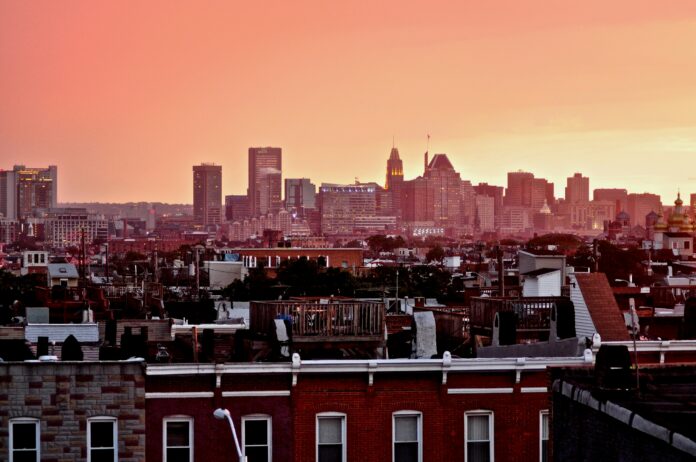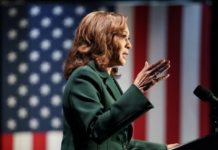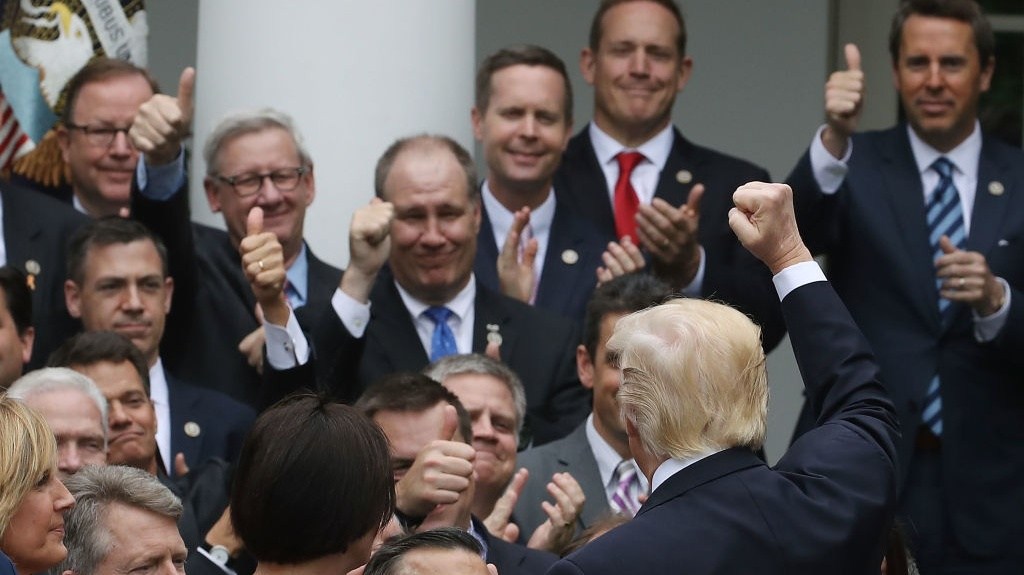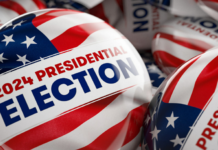By Candice Norwood/Originally published by The 19th
Angel St. Jean has seen big improvements to the Reservoir Hill neighborhood of Baltimore since she moved there 11 years ago. The historic, now majority-Black community had long been considered “perpetually up and coming,” she said, and parts of it had been underdeveloped for some time. In recent years, however, many of the vacant homes have been renovated, and neighbors meet for events like garden planting and street cleanups.
“We felt like we made an investment to make all of this happen,” St. Jean said. “Not just in terms of the homes, but being a part of the neighborhood fabric. We are part of neighborhood associations, we meet up in the parks and hang out together, our kids walk to school together. It’s a community.”
St. Jean and others living in Reservoir Hill told The 19th that this progress is now in jeopardy. A group of residents, the majority of them Black women, are fighting against a federally funded Amtrak project that they say will lead to the destruction of neighborhood residences and businesses. It will also expose local children to harmful rail emissions, they argue.
A civil rights complaint Reservoir Hill residents filed with the U.S. Department of Transportation (DOT) called on federal officials to look into the disparate harm that Amtrak’s project would cause to Black residents in the area. The complaint also says that Amtrak could have chosen a less discriminatory alternative for the project. The Federal Railroad Administration, one of 10 DOT agencies, is now investigating these allegations.
Amtrak named its program the Frederick Douglass Tunnel after the prominent 19th century abolitionist who also championed women’s rights. It is set to replace the aging Baltimore and Potomac Tunnel, which enables travel between Baltimore and Washington, D.C.
The replacement tunnel will be located farther north than the B&P tunnel’s current location, meaning that once completed in 2035, it will run underneath Reservoir Hill. Reservoir Hill can trace its roots back to 1680, according to the neighborhood’s nonprofit improvement council.
“These are all historic homes on the street, so if you’re tunneling underneath, we are all affected. Period. And that’s really basic,” said Lisa Ward, a board member of the Reservoir Hill neighborhood association who has lived there for nearly two years. “Of all of the 14 options that they say they considered, all 14 ran through predominantly Black communities.”
Ward is one of five neighborhood residents who spoke with The 19th to share fears about the planned construction, from noise pollution to potential structural damage to their homes. But one of the top concerns is the community school, Dorothy I. Height Elementary — named for the famed civil rights and women’s rights activist — which educates about 350 students, 90 percent of whom are Black.
Directly across from the elementary school Amtrak plans to build a ventilation facility to “provide protection for train passengers in the event of an emergency,” according to the Amtrak website. This structure will include emergency fans that “could extract smoke from the tunnel in the unlikely event of a fire.”
Reservoir Hill resident Carson Ward reached out to New York University law professor Deborah N. Archer detailing the community’s concerns. Archer, a civil rights lawyer who researches the effects of infrastructure developments on Black communities, then brought the issue to her Civil Rights and Racial Justice Clinic at the university, which helped file a Title VI complaint. Title VI prohibits recipients of federal funding from discriminating on the grounds of race, color or national origin.
The legal team will need to demonstrate that the project would have a racially disparate impact and that Amtrak could have met its project goals using less harmful alternatives, said Suchait Kahlon, a law student on the legal team of the racial justice clinic.
These alternatives include a “no-build” option that would leave the tunnel in its current configuration with minor maintenance. Another option named “Alternative 11” would run slightly north of the tunnel’s current location and primarily under an affluent, predominantly White neighborhood named Bolton Hill. (The existing B&P tunnel also runs under Bolton Hill.) The selected route for the project is more north than Alternative 11, putting it more directly in the path of Reservoir Hill.
The 2017 “record of decision” report, which was published by the Federal Railroad Administration after a review of the different proposed routes, stated that the no-build alternative “would have fewer near-term impacts to the physical environment, including historic, cultural, or natural resources, than the Selected Alternative.” The report continued that the selected route would have more “substantial beneficial impacts on transportation that outweigh the physical impacts of constructing the Selected Alternative.”
Similarly, the report argued that Alternative 11 would not have as many “commensurate benefits” as the other options. It could also have higher construction cost, the document said.
In response to questions from The 19th about the facility and the residents’ concerns, an Amtrak spokesperson pointed to a number of publicly accessible web links. In one document released after a community listening session in January, Amtrak said that the vent openings for exhaust are located on a side of the facility that faces away from the school.
The document goes on to say that “air emissions associated with the IVF (ventilation facility) should not cause, or substantially contribute to a violation of National Ambient Air Quality Standards (NAAQS), standards established by the U.S. EPA to protect human health and welfare, including children.”
Residents are not convinced.
“Just because your venting doesn’t exceed the federal standard doesn’t mean that this ventilation facility needs to go into this neighborhood in the first place,” said Reservoir Hill resident Darryl McClain. He has lived in the area for 13 years and is the father of a 3-year-old and a 5-year-old who go to school across from the planned ventilation facility.
He believes Amtrak representatives have already demonstrated that they are not acting in the local residents’ best interests. McClain recounted one day early this year when he went to pick up his daughter from school and learned that the kids had been kept from playing outside because of an Amtrak demolition nearby.
“I could tap on a teacher right now and ask the same question and they will all say the same thing: They had no idea this was happening,” McClain said.
Residents say a lack of transparency and communication from Amtrak throughout the development of the project — which has already been in the works for nearly a decade — is a major point of frustration for them.
Amtrak has held a number of community meetings to allow residents to ask questions about the work, but residents say the company either talks around their questions or declines to answer them.
Keondra Prier, the president of the Reservoir Hill Association who has lived there since 2017, said Amtrak should be developing an emergency plan in partnership with the community, which has not happened. Residents have also requested an alert system that would notify people if an emergency occurs or the air quality changes to dangerous levels, she added. Lisa Ward said the response from Amtrak representatives has been full of “disdain” when she and others attempt to ask questions.
The frustrations of Ward, Prier and St. Jean resemble those of many other Black women around the country who are on the frontlines of pushing back against environmental discrimination. The 19th previously covered the Banner sisters, who successfully challenged a grain export facility that would increase pollution in their already vulnerable Louisiana community.
New infrastructure projects often contribute to this distress by displacing Black and Brown residents, worsening segregation and increasing health hazards. One 2016 report from the University of Michigan and the University of Montana analyzed findings from researchers of “a consistent pattern over a 30-year period of placing hazardous waste facilities in neighborhoods where poor people and people of color live” throughout the United States.
Another 2022 study from the Harvard T.H. Chan School of Public Health stated that communities of color and low-income communities face higher risks of premature death from exposure to particle pollution in the form of dust, smoke or other fine molecules that people breathe in.
This reality is particularly notable for residents of color in Baltimore.
Black children in Maryland have almost five times the rate of asthma-related emergency department visits as White children, according to the Maryland Department of Health. The prevalence of asthma for children in Baltimore is estimated to be double the national figure.
McClain fears having a ventilation facility across from his kids’ school will make these disparities worse. The federal government appears to be aware of at least some potential for harm from the Frederick Douglass Tunnel construction, according to the 2017 record of decision report.
According to the report, the project “will have disproportionately high and adverse effects to Environmental Justice (EJ) populations as a result of property acquisition and impacts to housing, land use/zoning, community facilities, visual quality, and noise.” On the issue of air quality, the report states that the project will follow national air quality standards.
“I think it’s important that we consider the historical context of Baltimore,” said Kahlon with the NYU legal clinic. “Many of the inequities that we see today in Baltimore are the direct result of housing, transportation and infrastructure projects engaged in the 20th century.”
This includes a history of “racial covenants,” which were agreements that prevented Black people and other historically marginalized groups from buying or occupying land in certain neighborhoods.
The Frederick Douglass tunnel was championed by President Joe Biden during a visit to Baltimore in January, and it is part of a larger push by his administration to invest in infrastructure nationwide. Biden signed the Bipartisan Infrastructure Law in 2021, which allocated funding for thousands of projects including efforts like the tunnel in Baltimore.
Residents are awaiting a decision from the Federal Railroad Administration on the civil rights complaint. Though attention to their campaign is growing, many Reservoir Hill residents — even parents of students attending Dorothy I. Height Elementary — still do not know much information about the tunnel project, Prier said.
“We as Black women have always known that what people tell you is not necessarily what is real,” she said. “We can always imagine something better and we have to make that reality something tangible for our children and for the people in our community. If we lose that, we really lose the essence of who we are.”
Image: Yianni Mathioudakis/Unsplash



































